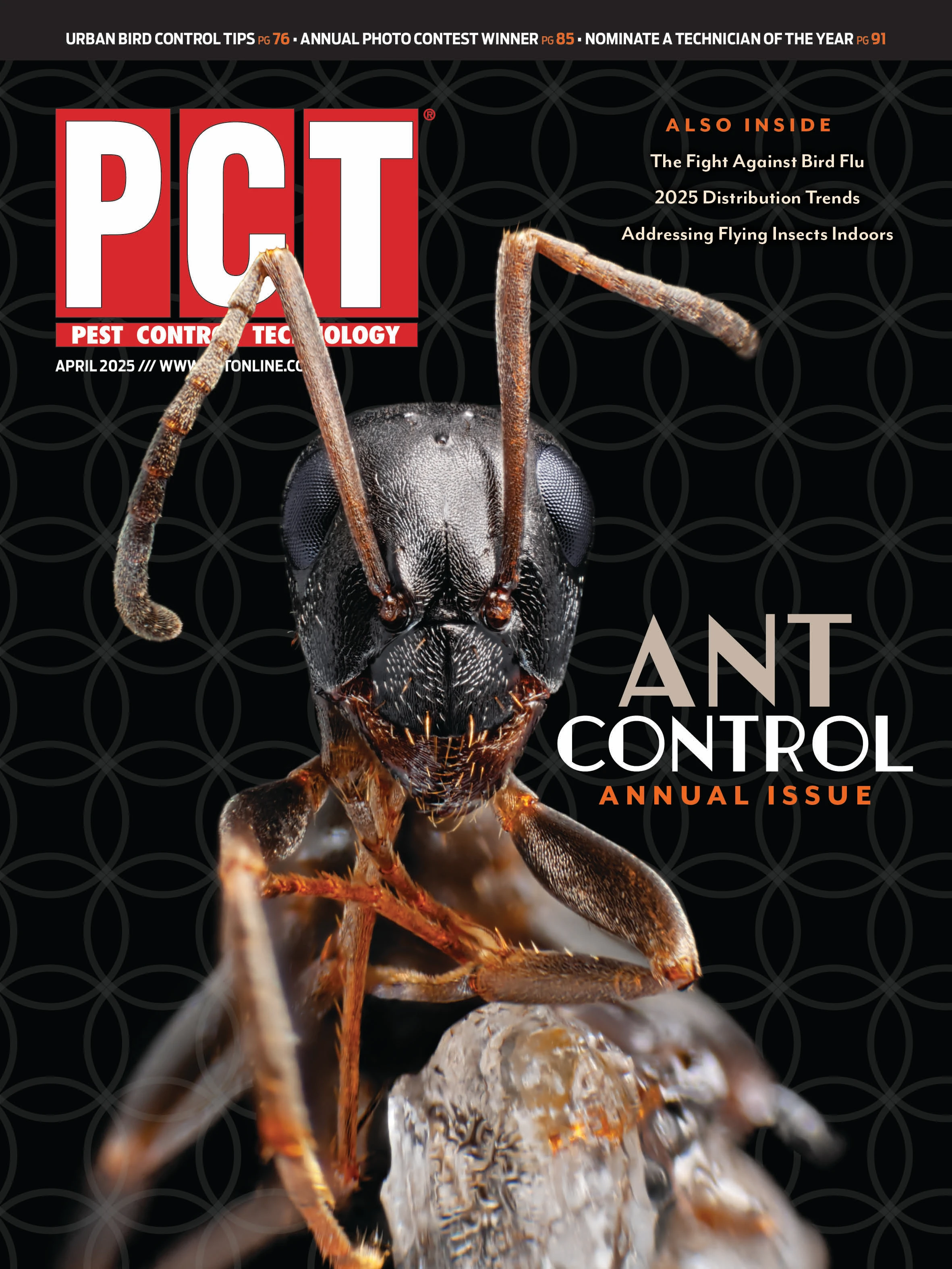
Some ant species become treatment headaches when colonies “bud” and create satellite nests, exacerbating pest pressure and adding a layer of complexity to inspection. David Joles of Certus Pest, based in Tampa, Fla., sees this behavior with Pharaoh, ghost and white-footed ants.
Baiting helps track down harborages, said Joles, COO. “Pharaoh ants are notorious for budding, and if you don’t identify them correctly and start using residual sprays, you can make the situation worse,” Joles said, noting that Certus Pest technicians use non-repellent sprays and rely heavily on baiting.
But job one, as experienced PMPs know, is to conduct an informed inspection and properly identify the ant. This is a science and an art that requires persistence and a practiced eye.
“I’ve seen pest control companies lose contracts because their approach was to treat what they could see as opposed to what they could not see,” said Keith Daniels, Integrated Pest Management (IPM) specialist, Four Seasons Environmental, Jonesboro, Ga.
Don’t forget to look up for white- footed, acrobat and odorous house ants. Daniels described cases where these pests were spotted underneath insulation in attic spaces. The homeowner had identified a problem in the shower and noticed ants trailing down from the ceiling. “We did a wall void treatment at the shower head, but once we started going up farther into the attic, I followed ant trails across beams that led me directly to the insulation, I peeled it back a bit and found the entire nest,” he said.

Sweet Spots
Henry Morris has no problem shining a light on sanitation issues to show clients the source. “I’ll take my flashlight, lay it sideways on the counter top and point out, ‘This is a feast for an ant and a crumb for us,’” said Morris, the owner of Precise Services located in Elgin, S.C.
He’ll smash a potential odorous house ant and give the surface a whiff to see if he’s on target. Morris also goes into accounts expecting surprises while “trail” hunting. Sometimes, connecting the dots from a sighting to the source takes time.
Such was the case when a customer called about ants in the kitchen, where 52% of PCT ant survey respondents discover ant activity. The suspects were Argentine ants and Morris tracked their path back to a potted plant on an adjacent deck. He treated the site, but the ants popped up in the dishwasher.
He placed bait stations with a variety of gels in the dishwasher. “The homeowner could take them out to run the dishwasher and then return them,” Morris said, offering the client careful instructions, namely to not throw out any ant-swarmed bait. The process took six weeks to eradicate the ants, and treatment was successful.
Some homes seem to be sweet spots for ants, Morris noted. His theory: Once a colony is wiped out, other colonies pick up on the pheromone trail and return to the site.

Underground Investigations
Pavement ants are a fairly common find in some commercial accounts such as schools and manufacturing facilities, said Justin Marchant, technical director at Pest-End in Plaistow, N.H. “As a species, we know the least about the inner workings of their colonies because they’re always underground,” he said.
Inspections are foundation-focused and lead to “cracks somewhere,” Marchant said. He noted a hotspot: the pavement under a boiler that warms soil that lies beneath. He calls the species “extremely persistent” and leans on baits, changed seasonally based on what ants are hungry for, like carbs after winter dormancy and proteins during summer.
He often baits beyond the target area. If a customer finds pavement ants in a shower, Marchant and Pest-End technicians cover exterior areas with a granular bait while leaving gel baits indoors.
He shared a specific example: “A school’s elevator room required annual inspection,” Marchant said. “When they went from one year to the next, 20 pounds of sand had surfaced from under the foundation by pavement ants. You could fill half a wheelbarrow.”

Explore the April 2025 Issue
Check out more from this issue and find your next story to read.